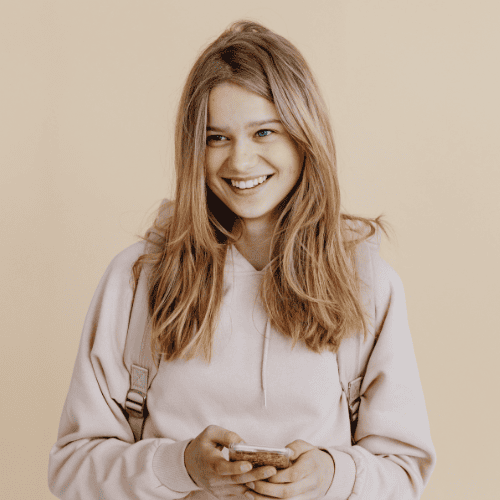
Laparoscopy: Understanding the procedure and its benefits
- What is laparoscopy?
- Why is laparoscopy performed?
- Benefits of laparoscopy
- Preparing for laparoscopic surgery
- Limitations of laparoscopy
- Postoperative care and patient instructions
- Laparoscopy in emergency medicine
- How is laparoscopy performed?
- What are the types of procedures that can be done using laparoscopy?
- Who is a candidate for laparoscopy?
- Risks and considerations
Laparoscopy, also known as minimally invasive surgery, is a surgical technique used to perform procedures through small incisions in the abdomen. In this article, we'll explore what laparoscopy entails, why it's performed, and the benefits it can offer.
What is laparoscopy?
Laparoscopy is a surgical procedure that uses a laparoscope, a thin, flexible tube equipped with a camera and light source, to visualize and operate on internal organs in the abdomen. During laparoscopy, several small incisions are made in the abdomen, through which the laparoscope and other surgical instruments are inserted.
Why is laparoscopy performed?
Laparoscopy is performed for various diagnostic and therapeutic purposes, including:
- Diagnosis: Laparoscopy can be used to diagnose conditions such as endometriosis, pelvic inflammatory disease, ovarian cysts, or tumors in the abdomen.
- Treatment: Laparoscopy allows for the performance of minimally invasive surgical procedures, such as gallbladder removal, appendectomy, hernia repair, or hysterectomy, with smaller incisions and shorter recovery times compared to traditional open surgery.
Benefits of laparoscopy
- Minimal scarring: Laparoscopy requires only small incisions in the abdomen, resulting in less scarring and a more cosmetic outcome compared to traditional open surgery.
- Faster recovery: Because laparoscopy is minimally invasive, it typically requires shorter hospital stays and faster recovery times, allowing patients to return to their normal activities sooner.
- Reduced risk of complications: Laparoscopy is associated with lower rates of complications such as infection, bleeding, and postoperative pain compared to open surgery.

Preparing for laparoscopic surgery
Proper preparation can make a noticeable difference in the success of a laparoscopic procedure and recovery experience. Patients are typically advised to:
- Avoid eating or drinking for several hours before surgery.
- Inform the medical team about any medications, allergies, or chronic conditions.
- Stop taking certain medications, such as blood thinners or anti-inflammatory drugs, if recommended by the surgeon.
- Arrange for someone to accompany them home after the procedure, as anesthesia will impair the ability to drive or travel alone.
Following these steps helps minimize surgical risks and supports a smooth transition into recovery.
Limitations of laparoscopy
Although laparoscopy is highly effective in many situations, there are scenarios where it may not be the preferred approach. For example:
- Patients with extensive internal scar tissue from previous surgeries may face increased risks during laparoscopy.
- Very large tumors or masses may be better suited for open procedures.
- In emergencies, such as internal bleeding or organ rupture, a surgeon might opt for open surgery for quicker access.
Each case is evaluated individually to determine the safest and most effective surgical method.
Postoperative care and patient instructions
After laparoscopic surgery, the quality of recovery often depends on how closely a patient follows postoperative care guidelines. These may include:
- Keeping incisions clean and dry.
- Monitoring for signs of infection, such as redness, swelling, or fever.
- Avoiding heavy lifting or strenuous activities for a specified period.
- Taking prescribed pain medication as directed.
Most patients receive detailed aftercare instructions before discharge, and follow-up appointments are scheduled to monitor progress.
Laparoscopy in emergency medicine
Though often planned in advance, laparoscopy is sometimes used in emergency settings as a diagnostic tool. When imaging tests fail to identify the cause of sudden abdominal pain or internal bleeding, laparoscopy allows doctors to directly examine the abdominal cavity. This can lead to quicker diagnoses and more immediate interventions, helping stabilize patients in critical situations.
How is laparoscopy performed?
Laparoscopy is performed under general anesthesia to ensure that the patient is comfortable and pain-free during the procedure. The surgeon makes a few small incisions in the abdomen, typically around 0.5 to 1 centimeter in length. A laparoscope, which is a thin tube with a camera and light, is inserted through one of the incisions, allowing the surgeon to view the internal organs on a monitor. Specialized surgical instruments are inserted through the other incisions to perform the necessary procedure. Laparoscopy can be used for diagnostic purposes or to perform various surgical interventions, depending on the patient's condition.
What are the types of procedures that can be done using laparoscopy?
Laparoscopy is a versatile technique used for a wide range of procedures, including both diagnostic and therapeutic treatments. Some common procedures performed using laparoscopy include gallbladder removal (cholecystectomy), appendectomy, hernia repair, hysterectomy, and ovarian cyst removal. It is also used for diagnostic purposes, such as investigating unexplained abdominal pain, performing a biopsy, or diagnosing conditions like endometriosis. The ability to perform these surgeries with minimal incisions makes laparoscopy a preferred option for many patients.
Who is a candidate for laparoscopy?
Laparoscopy is typically recommended for individuals who are dealing with conditions that can be treated through minimally invasive surgery. It's often suitable for patients who are in good general health and have conditions like gallstones, appendicitis, or pelvic disorders. However, some patients may not be suitable candidates for laparoscopy, such as those with severe scarring from previous surgeries, significant obesity, or certain medical conditions that could complicate the procedure. A healthcare provider will assess the patient's overall health, condition, and specific needs to determine whether laparoscopy is the best approach.
Risks and considerations
While laparoscopy is generally considered safe, it's essential to be aware of the potential risks and considerations, including:
- Risk of injury: Although rare, laparoscopy carries a risk of injury to surrounding organs or blood vessels during the procedure.
- Carbon dioxide absorption: The use of carbon dioxide gas to inflate the abdomen during laparoscopy can cause discomfort, bloating, or complications related to gas absorption.
Laparoscopy is a versatile surgical technique that offers numerous benefits for both diagnostic and therapeutic purposes. By providing a minimally invasive approach to surgery, laparoscopy allows for faster recovery times, reduced risk of complications, and improved patient outcomes compared to traditional open surgery. If you're considering laparoscopy, it's essential to discuss your options with a qualified healthcare provider to determine the best course of action for your individual needs and circumstances.


